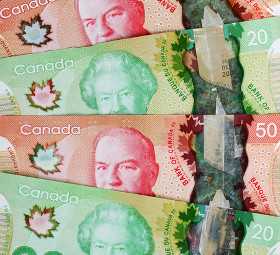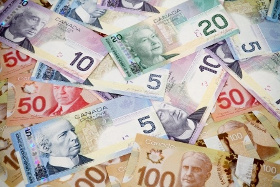The Canadian dollar is strengthening against its US currency peer on Wednesday, despite price inflation coming in higher than the market forecast. Although the loonie has fallen against the greenback this year, the Canadian dollar has been making gains in recent months, allowing the currency to stabilize after enormous volatility in the first half of 2020.
According to Statistics Canada, the consumer price index (CPI) rose 0.4% in October, up from the 0.1% drop in September. The annual inflation rate climbed to 0.7% in October, up from 0.5% in the previous month. The market had penciled in a reading of 0.4%, but it is still lower than the 2020 high of 2.2% in February. The core inflation rate, which excludes volatile food and energy, advanced at a higher-than-expected year-over-year pace of 1%.
In October, the Canadian economy reported higher prices for food (2.3%), shelter (1.8%), and health care (1.8%). They were offset slightly by declines in apparel (-4%), transportation (-0.1%), and recreation and education (-1.3%).
In other data, housing starts surged from 208,700 in September to 214,900 in October. Wholesale sales rose 0.9% in September, up from 0.3% in August. Manufacturing sales popped 1.5% in September, up from the 1.4% decline in August. New motor vehicle sales increased by 3% in September.
In the financial markets, foreign securities purchases rose $4.5 billion in September, while foreign securities purchases by Canadians spiked $11.2 billion.
The loonie is finding support from rising energy prices. December West Texas Intermediate (WTI) crude oil futures rallied $0.71, or 1.71%, to $42.14 per barrel. January natural gas futures tacked on $0.046, or 1.65%, to $2.891 per million British thermal units (btu).
Since Canada maintains a current account deficit, exports remain critical to the national economy. Oil and gas products are the countryâs top exports, so any significant change in prices â high or low â can have an impact on both the broader economy and the loonie.
The bond market was mixed in the middle of the trading week. The benchmark ten-year bond dropped 0.023% to 0.715. The one-year note was unchanged at 0.2%, while the 30-year bond slid by 0.044% to 1.255%.
The USD/CAD currency pair tumbled 0.4% to 1.3052, from an opening of 1.3107, at 16:04 GMT on Wednesday. The EUR/CAD slipped by 0.34% to 1.5490, from an opening of 1.5544.
If you have any questions, comments, or opinions regarding the Canadian Dollar, feel free to post them using the commentary form below.

Canadian Dollar Strengthens Despite Higher-Than-Expected Inflation
More from NewsMore posts in News »


Be First to Comment